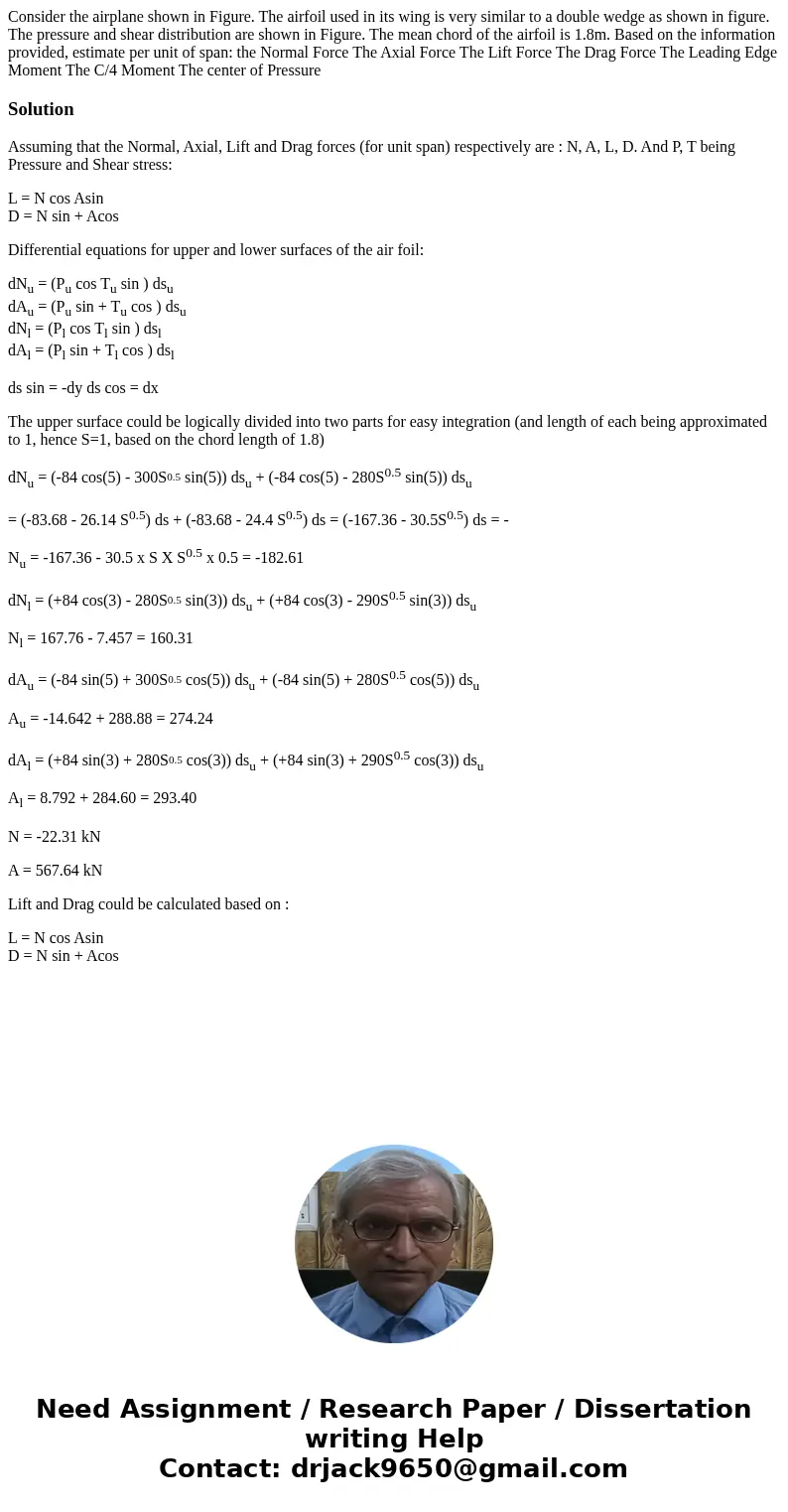Consider the airplane shown in Figure The airfoil used in it
Solution
Assuming that the Normal, Axial, Lift and Drag forces (for unit span) respectively are : N, A, L, D. And P, T being Pressure and Shear stress:
L = N cos Asin
D = N sin + Acos
Differential equations for upper and lower surfaces of the air foil:
dNu = (Pu cos Tu sin ) dsu
dAu = (Pu sin + Tu cos ) dsu
dNl = (Pl cos Tl sin ) dsl
dAl = (Pl sin + Tl cos ) dsl
ds sin = -dy ds cos = dx
The upper surface could be logically divided into two parts for easy integration (and length of each being approximated to 1, hence S=1, based on the chord length of 1.8)
dNu = (-84 cos(5) - 300S0.5 sin(5)) dsu + (-84 cos(5) - 280S0.5 sin(5)) dsu
= (-83.68 - 26.14 S0.5) ds + (-83.68 - 24.4 S0.5) ds = (-167.36 - 30.5S0.5) ds = -
Nu = -167.36 - 30.5 x S X S0.5 x 0.5 = -182.61
dNl = (+84 cos(3) - 280S0.5 sin(3)) dsu + (+84 cos(3) - 290S0.5 sin(3)) dsu
Nl = 167.76 - 7.457 = 160.31
dAu = (-84 sin(5) + 300S0.5 cos(5)) dsu + (-84 sin(5) + 280S0.5 cos(5)) dsu
Au = -14.642 + 288.88 = 274.24
dAl = (+84 sin(3) + 280S0.5 cos(3)) dsu + (+84 sin(3) + 290S0.5 cos(3)) dsu
Al = 8.792 + 284.60 = 293.40
N = -22.31 kN
A = 567.64 kN
Lift and Drag could be calculated based on :
L = N cos Asin
D = N sin + Acos

 Homework Sourse
Homework Sourse